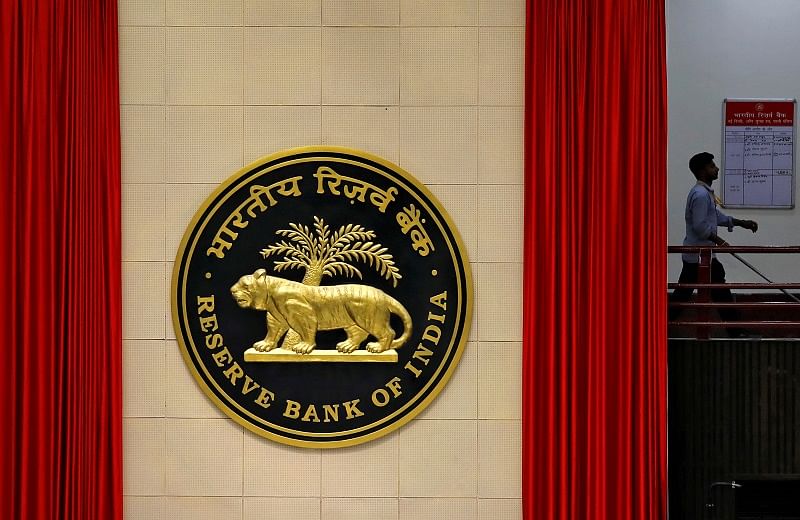
Seldom has the Reserve Bank of India (RBI) marched in lock-step with the government the way it is doing now. Seldom has the government depended so heavily on the RBI to do its job of igniting growth engines. By presenting a budget, which lacked immediate measures to revive the economy, the government almost forced RBI to take unconventional policy steps for urgent succour to the sliding economy even when inflation stayed unexpectedly high. The RBI’s primary responsibility has been to target inflation since 2015.
A Union Budget, presented in the backdrop of an 11-year low economic growth projection, may have undermined the slowdown as finance minister Nirmala Sitharaman’s speech categorically mentioned that India’s economy continued to tread the path of high growth, but an RBI survey just a week after the budget threw up certain facts, which temper any optimism about growth turnaround.
According to the survey, in which over 5,000 individuals, households and commercial firms across the country participated, consumers are reluctant to spend, companies are cutting back on production and capacity utilisation of companies has fallen to its lowest since 2009, when the RBI first came up with the survey.
The household’s spendings have taken a back seat because they are worried their incomes may not get better in the coming months or a year, but the future price levels of goods and services will remain elevated. Those surveyed also anticipate that unemployment will remain at the same level in the coming months and the economy will worsen further.
Well, the budget did not propose any measure, which could give people a respite from higher prices and joblessness in the short term. It did provide funds to infrastructure, rural and farm sectors but the overall focus remained on supporting investment over consumption.
Automobile, real estate sector and small businesses complained there was not enough for them. Incidentally, these are the sectors that provide employment on a large scale.
As far as the fear of price is concerned, the budget cannot do much. But it could have left more money in the hands of people through lower income tax rates in order to enable them to fight inflation. But, that too came with a rider and, according to a late realisation by the tax department, that for a vast swathe of the middle class, the old tax regime is better. That prolongs the middle class’ inflation fight.
The headline retail inflation, which reached a six-year high of 7.34% in December, is likely to remain elevated till July-August, led by low base effect, high food prices, higher telecom and medicine prices, which were revised late last year, and a spike in gold rates.
Making matters more complex, the budget proposed a further dip into the household savings to keep its fiscal deficit from flaring up. Its reliance on small savings has gone up to Rs 2.4 lakh crore from the budgeted Rs 1.3 lakh crore. And, it has budgeted the same amount for next year.
An income tax regime, which does away with exemptions combined with the government’s excessive dependence on small savings presents a fatal mix. The Finance minister said she expects 80% of the individual taxpayers to move to the new income tax regime, which does away with exemptions for long-term savings.
More disposable income may give a boost to demand but lower savings will affect investment in the long run and may also shrink the household fund kitty from which the government is forking out more every year.
RBI policy to boost consumption
It was in this backdrop, that the RBI delivered a monetary policy aimed at boosting consumption immediately by making credit cheaper for sectors such as auto, housing and MSMEs. It also took certain historic steps that would leave some durable liquidity with banks for sectors in need. It also took measures to hasten rate transmission by banks to the borrowers. The cash reserve ratio relief allowed commercial banks to deduct the equivalent of incremental credit disbursed by them as retail loans for auto, residential housing and loans to micro, small and medium enterprises from their demand and time liabilities.
The RBI also permitted the extension of date of commencement of project loans for commercial real estate, delayed for reasons beyond the control of promoters, by another year without downgrading the asset classification. This could help improve last-mile funding for real estate projects. Though the RBI did not cut the policy interest rate in view of high inflation, certain bold decisions such as revised liquidity management framework including long-term repo operations, withdrawal of overnight fixed rate repo and introduction of term repos every fortnight would ensure banks have enough funds to lend.
The CRR relaxation linked to incremental bank lending to autos, residential housing, and MSMEs, would ensure cheap loan to the sectors and are critical for employment but were not addressed in the budget.
